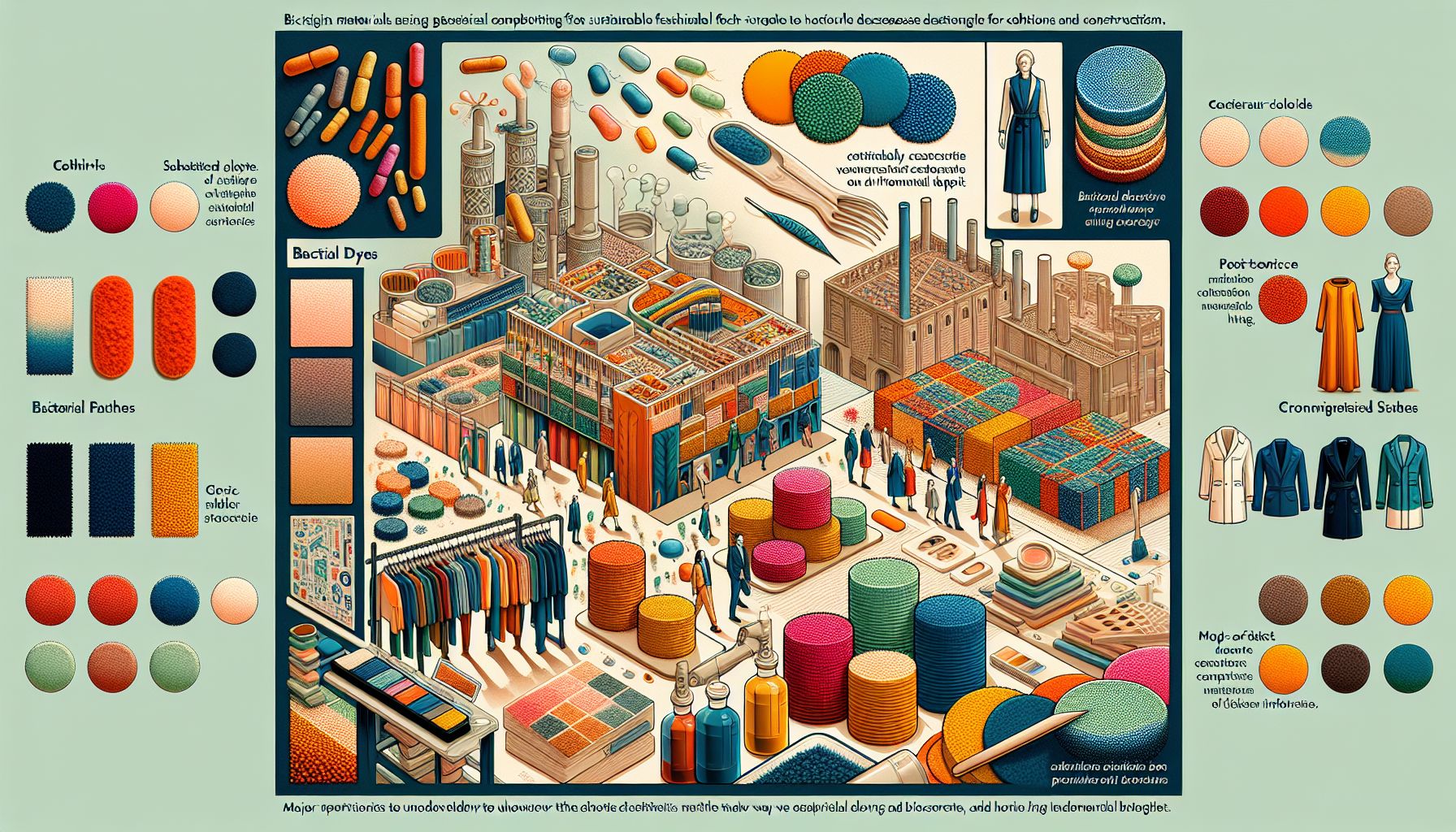Bio-Inspired Materials: Nature's Blueprint for Sustainable Fashion and Construction

Eindhoven, Thursday, 3 October 2024.
Innovative designers are harnessing the power of bacteria to revolutionize the fashion and construction industries. From bacterial dyes that use significantly less water to bioconcrete with 95% fewer emissions, these biomaterials promise to dramatically reduce environmental impact. As these technologies scale, they’re poised to transform how we produce clothing and build structures, offering a glimpse into a more sustainable future.
Harnessing Bacteria for Sustainable Design
Biomaterials inspired by natural processes are at the forefront of a new wave of sustainable innovation. Designers and scientists are collaborating to create materials that not only mimic nature but also significantly reduce environmental footprints. One such example is the ‘Exploring Jacket,’ created using pigments from Streptomyces coelicolor, a bacterium that produces vibrant colors with minimal water usage compared to traditional plant-based dyes. This approach eliminates the need for vast swathes of farmland, a critical consideration as global populations rise and land becomes increasingly scarce[1].
Revolutionizing Construction with Bioconcrete
In the construction sector, the Gathering Lamp showcases the potential of bioconcrete, a material that boasts 95% fewer emissions than traditional cement while being three times stronger[1]. Such advances are crucial as the construction industry seeks to lower its substantial carbon footprint. Developed by NPOL, a collaborative venture launched by Natsai Audrey Chieza and Christina Agapakis, bioconcrete reflects a shift towards sustainable practices through biodesign. This venture aims to harness living organisms to create durable, eco-friendly materials, aligning with global decarbonization goals[1].
Key Innovators and Their Vision
Natsai Audrey Chieza, the founder of Faber Futures, is at the helm of this transformative journey. Based in the UK, her work emphasizes keeping materials in circulation to prevent them from ending up in landfills. Chieza’s vision extends beyond mere product development; she aims to inspire both consumers and brands to embrace biodesign for sustainability. By advocating for shorter supply chains and meaningful products, Chieza and her team at NPOL are setting a precedent for what the future of fashion and construction could look like[1].
The Challenge of Scaling Biodesigned Materials
Despite the promising potential of these materials, scaling biodesigned products remains a significant challenge. High production costs due to the need for precise engineering present a barrier to widespread adoption. The Exploring Jacket, for instance, retails at £4,000 (approximately $5,400), a price point that reflects the complexity and novelty of its creation rather than traditional market dynamics[1]. However, as technology advances and consumer perceptions shift towards sustainability, these barriers may gradually diminish.
Towards a Sustainable Future
The ongoing research and development in bio-inspired materials, as supported by institutions like BioInspired Syracuse and various academic collaborations across the globe, underscore the potential impact of these innovations. By focusing on smart materials and sustainable practices, the fashion and construction industries are poised to lead the charge in reducing global carbon emissions. As these technologies become more mainstream, they will likely redefine industry standards and consumer expectations, paving the way for a more sustainable and environmentally conscious world[2][3].

